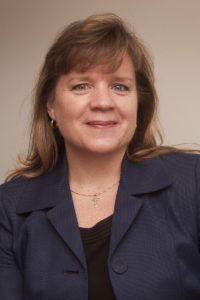“Bioapplications of magnetic nanowires: barcodes, heaters, biocomposites“
Abstract:
Magnetic nanowires can be engineered using composition and shape, and by modulating both of these along their axes (10nm-100um) or their diameters (10-200nm). This talk will discuss applications of both single nanowires and arrays of vertically aligned nanowires in biomedical fields, such as nano-barcodes [1], and biolabels for cells and exosomes [2,3], nano-heaters for hyperthermia therapy and organ preservation [4], and biocomposites [5]. For most of these applications, the reversal mechanism of magnetization can play a critical role. For example, magnetic coercivity and remanence has been used for contact-free readout of nano-barcode signatures, and the motion of domain walls can limit heating. Magnetic reversal typically occurs by uniform precession and coherent rotation or by domain walls that are transverse or vortices. Here, a novel approach to decoding specific reversal signatures will be described via a fast modification of the first order reversal curve (FORC) technique, called the projection method. In addition to decoding, the method elucidates the mechanisms of reversal which is of interest to the fundamental understanding of nanomagnets and can lead to improved future devices, such as decoding using ferromagnetic resonance (FMR) [6]. By understanding the
nanomagnetics, these nanowires have been used individually to isolate biospecies, such as cancer cells [2] and tumor-derived exosomes (TEXs) [3] for fundamental studies in medicine. As nanoscale objects, nanowires have
also been suspended in cryopreservation agents to provide the rapid, uniform nanowarming needed to restore preserved tissues and organs [4]. Finally, by aligning nanowires vertically in bio-friendly polymers, applications such as internal band-aids can be coded or functionalized for personalized health care. This talk will focus on the measurement methods for each of the biomedical applications mentioned, and will relate these measurements back to the fundamental magnetization engineering of the cylindrical nanowires
Biography:
Bethanie Stadler, Kelen Professor and Associate Head, Electrical & Computer Engineering, University of Minnesota, obtained her PhD from MIT and BS from CWRU. She is a Fellow of MRS and a Senior Member of the IEEE. Stadler was a 2015 IEEE Magnetics Society Distinguished Lecturer, giving 59 talks in 14 countries.
She taught at the IEEE Magnetic Summer School in India and Italy, and later hosted the school in Minnesota. For MRS, Stadler has served as Chair of the Fall Meeting, on the Board of Directors, Secretary, and Program Development Subcommittee Chair. For IEEE, she has served as Program Committee Chair for the Magnetism
and Magnetic Materials conference in 2020 and will be the General Co-Chair of Intermag 2023 in Sendai, Japan.
